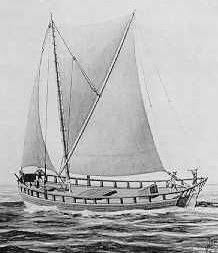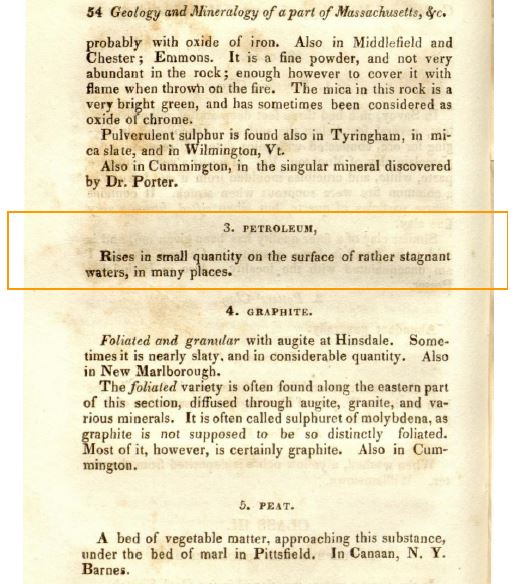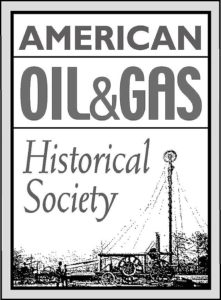by Bruce Wells | Jul 18, 2025 | Energy Education Resources
A geologist tracks down the first references to petroleum.
Petroleum geologist and historian Raymond P. Sorenson has spent much of his professional career writing about the oil and natural gas exploration and production industry.
Among Sorenson’s ongoing projects is documentation of the earliest signs of oil worldwide, including references to hydrocarbons long before the 1859 first U.S. oil well drilled 69.5 feet into the Venango sands of Pennsylvania.
About three centuries earlier, a Spanish expedition in the Gulf of Mexico led by Don Luis de Moscoso landed at the mouth of the Sabine River in the future state of Texas. The New World explorers in 1543 discovered Indians had for centuries utilized natural seeps to waterproof canoes, apply to abrasions, and more.

A Spanish expedition in 1543 used brigantines to explore the coast of the Gulf of Mexico.
Sorenson, retired and living in Tulsa, initially focused his research on geological surveys, reports from other exploring expeditions, and scientific journals. He then progressed to references cited by others, concentrated his efforts on North America and English language sources — the most readily available — but discovered rare sources as well.
Oil in Antiquity to Today
The petroleum geologist’s ongoing work has added more than 740 reference pages (with captured images) of his sources for the earliest signs of hydrocarbons in North America and other parts of the world.
In 2002, Sorenson shared with the American Oil & Gas Historical Society his 59-page bibliography of “Pre-Drake” publications. “For the past few years I have been engaged in a systematic study to document what was known about oil and natural gas prior to the Drake well,” he noted.

“I have an additional list of cited references that I have not yet examined of comparable size,” Sorenson added in a follow-up email to AOGHS. “The majority are in languages other than English, and I suspect that many of them will not be accessible through my library resources (or my linguistic skill set).”
A petroleum historian and consulting geologist based in Tulsa, Oklahoma, Sorenson explained in his email to AOGHS that to aid researchers, he has been using images of every page that contains relevant material, posting the full reference information at the top, and outlining the relevant portion of the text.

An 1835 reference to signs of oil and natural gas in Massachusetts prior to the first commercial U.S. oil well in Pennsylvania. Image courtesy Ray Sorenson.
“So far I have found relevant information in more than 550 publications with over 3,500 net pages, covering at last count 31 states, five Canadian provinces, and many foreign countries on other continents,” Sorenson noted in January. “For several topics, I have created subsets. I expect to continue to build the collection.”
In addition to antiquity references, Sorenson’s research for his “Pre-Drake Literature Collections by Subject” has thus far included:
California, Canada, Central & South America, Early Geologists, Europe, Fiction, Humboldt, Industrial & Laboratory, Initial Reactions, Kentucky, Maps & Figures, Medicinal , Middle East Asia Africa, Midwest, New England, New York, Oil & Gas Wells Pre-Drake, Ohio, West Virginia, Pennsylvania, Religious, Scientific American, Shales that Burn, Southern United States, Taylor R.C., Statistics of Coal, Textbooks, Volcanoes and Earthquakes, David Wells, Annual of Scientific Discovery, and Western United States.

Although many of his discoveries were found in obscure scholarly journals, Sorenson also found petroleum references in popular 19th-century publications. For example, the April 18, 1829, issue of “Niles’ Register” reported a Kentucky salt well driller finding oil.
“We have just conversed with a gentleman from Cumberland county, who informs us that in boring through rocks for salt water, a fountain of petroleum, or volatile oil, was struck, at the depth of 180 feet,” the Baltimore publication noted on page 117.
Sorenson’s Research Gigabytes
A long-time member of the American Association of Petroleum Geologists (AAPG) and the Petroleum History Institute (PHI), Sorenson has made many presentations and published academic papers with both. He submitted to PHI a paper on his history of oil and natural gas production from wells prior to 1859 for the journal Oil-Industry History.
The wells were drilled seeking water or brine, but Sorenson found one that flowed an estimated 2,500 barrels of oil per day in the 1820s.
In 2007, Sorenson adapted many of his contributions to AAPG for its extensive Discovery Series with “First Impressions: Petroleum Geology at the Dawn of the North American Oil Industry.” In January 2013, his “Historic New York Survey Set High Geologic Standards” was published in AAPG Explorer magazine, one of his many contributions to that publication.

Sorenson, who also has assisted with AOGHS articles (see Rocky Beginnings of Petroleum Geology), noted in his email that he has no plans to provide this collection in searchable form on a website, but will work with anyone who is conducting similar research.
Everything in the Sorenson collection is preserved in hard copy and digital (PDF) form, adding up to 11 feet of shelf space — about 27 gigabytes of computer memory.
Sorenson intends to give his full collection of research to the Drake Well Museum and Park in Titusville, at the site where Edwin L. Drake first found oil in the upper Venango sands.
Today, the Oil Region Alliance of Business, Industry and Tourism proclaims that historic part of northwestern Pennsylvania, “The Valley that Changed the World.”
For more information about Ray Sorenson’s on-going oil history projects and resources, post a comment below.
_______________________________
1859 Pennsylvania Well
The beginning of the science of petroleum geology might be traced to 1859 when a new industry began in western Pennsylvania. An oil well drilled in 1859 by former railroad conductor Edwin L. Drake along Oil Creek at Titusville sought oil for making kerosene, a new lamp fuel at the time made from coal.
Slowed by delays in receiving funds for what locals called “Drake’s Folly” and drilling with a steam-powered cable-tool rig, it took Drake more than a year to find oil at a depth of 69.5 feet. He also made his own innovations along the way, including adding a 10-foot cast iron pipe to the bore hole — a first.
To the relief of company founder George Bissell and investors in the Seneca Oil Company of New Haven, Connecticut, Drake completed the first U.S. oil well drilled specifically for oil. The August 27, 1859, discovery came in a geologic formation that would be called the Venango sands.
_______________________
Recommended Reading: Trek of the Oil Finders: A History of Exploration for Petroleum (1975); The Birth of the Oil Industry (1936); The Prize: The Epic Quest for Oil, Money & Power (2008); Myth, Legend, Reality: Edwin Laurentine Drake and the Early Oil Industry
(2008); Myth, Legend, Reality: Edwin Laurentine Drake and the Early Oil Industry (2009). Your Amazon purchase benefits the American Oil & Gas Historical Society. As an Amazon Associate, AOGHS earns a commission from qualifying purchases.
(2009). Your Amazon purchase benefits the American Oil & Gas Historical Society. As an Amazon Associate, AOGHS earns a commission from qualifying purchases.
_______________________
The American Oil & Gas Historical Society (AOGHS) preserves U.S. petroleum history. Please become an AOGHS annual supporter and help maintain this energy education website and expand historical research. For more information, contact bawells@aoghs.org. © 2025 Bruce A. Wells.
Citation Information – Article Title: “Sorenson Oil History Project.” Authors: B.A. Wells and K.L. Wells. Website Name: American Oil & Gas Historical Society. URL: https://aoghs.org/energy-education-resources/exploring-the-earliest-signs-of-oil. Last Updated: July 18, 2025. Original Published Date: August 5, 2020.





